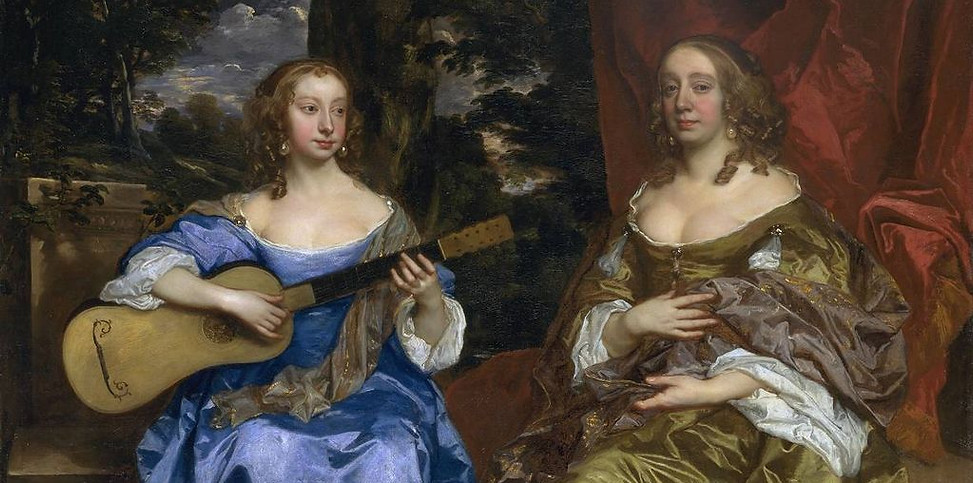
Baroque - VI
Peter Lely
1618 – 1680
Sir Peter Lely (14 September 1618 – 7 December 1680) was a painter of Dutch origin whose career was nearly all spent in England, where he became the dominant portrait painter to the court. He became a naturalised British subject and was knighted in 1679.
Lely was born Pieter van der Faes to Dutch parents in Soest in Westphalia, where his father was an officer serving in the armed forces of the Elector of Brandenburg. Lely studied painting in Haarlem, where he may have been apprenticed to Pieter de Grebber. He became a master of the Guild of Saint Luke in Haarlem in 1637. He is reputed to have adopted the surname "Lely" (also occasionally spelled Lilly) from a heraldic lily on the gable of the house where his father was born in The Hague.
He arrived in London in around 1643, His early English paintings, mainly mythological or religious scenes, or portraits set in a pastoral landscape, show influences from Anthony van Dyck and the Dutch baroque. Lely's portraits were well received, and he succeeded Anthony van Dyck (who had died in 1641) as the most fashionable portrait artist in England. He became a freeman of the Painter-Stainers' Company in 1647 and was portrait artist to Charles I. His talent ensured that his career was not interrupted by Charles's execution, and he served Oliver Cromwell, whom he painted "warts and all", and Richard Cromwell. In the years around 1650 the poet Sir Richard Lovelace wrote two poems about Lely – Peinture and "See what a clouded majesty ..."
After the English Restoration in 1660, Lely was appointed as Charles II's Principal Painter in Ordinary in 1661, with a stipend of £200 per year, as Van Dyck had enjoyed in the previous Stuart reign. Lely became a naturalised English subject in 1662. The young Robert Hooke came to London to follow an apprenticeship with Lely before being given a place at Westminster School by Richard Busby.
Among his most famous paintings are a series of 10 portraits of ladies from the Royal court, known as the Windsor Beauties, formerly at Windsor Castle but now at Hampton Court Palace; a similar series for Althorp; a series of 12 of the admirals and captains who fought in the Second Anglo-Dutch War, known as the "Flagmen of Lowestoft", now mostly owned by the National Maritime Museum in Greenwich; and his Susannah and the Elders at Burghley House.
His most famous non-portrait work is probably Nymphs by a Fountain in Dulwich Picture Gallery.
Lely played a significant role in introducing the mezzotint to Britain, as he realized its possibilities for publicising his portraits. He encouraged Dutch mezzotinters to come to Britain to copy his work, laying the foundations for the English mezzotint tradition.
Lely lived from about 1651 to 1680 at No. 10-11 Great Piazza, Covent Garden. He was knighted in 1679. Lely died soon afterwards at his easel in Covent Garden, while painting a portrait of the Duchess of Somerset. Sir Peter was buried at St Paul's Church, Covent Garden.

Self-portrait
c. 1660

Earl and Countess of Oxford

Sir Robert Worsley, 3rd Baronet

Lady Mary Fane
1650

Lely Queen Mary II
circa 1677-1680

Portrait of a man, thought to be George Booth, Lord Delamere
1660

Portrait of Lady Elizabeth Strickland, née Pile
1659

Catherine of Braganza, Queen of England
1665

Portrait of a Lady with a Blue Drape
circa 1660
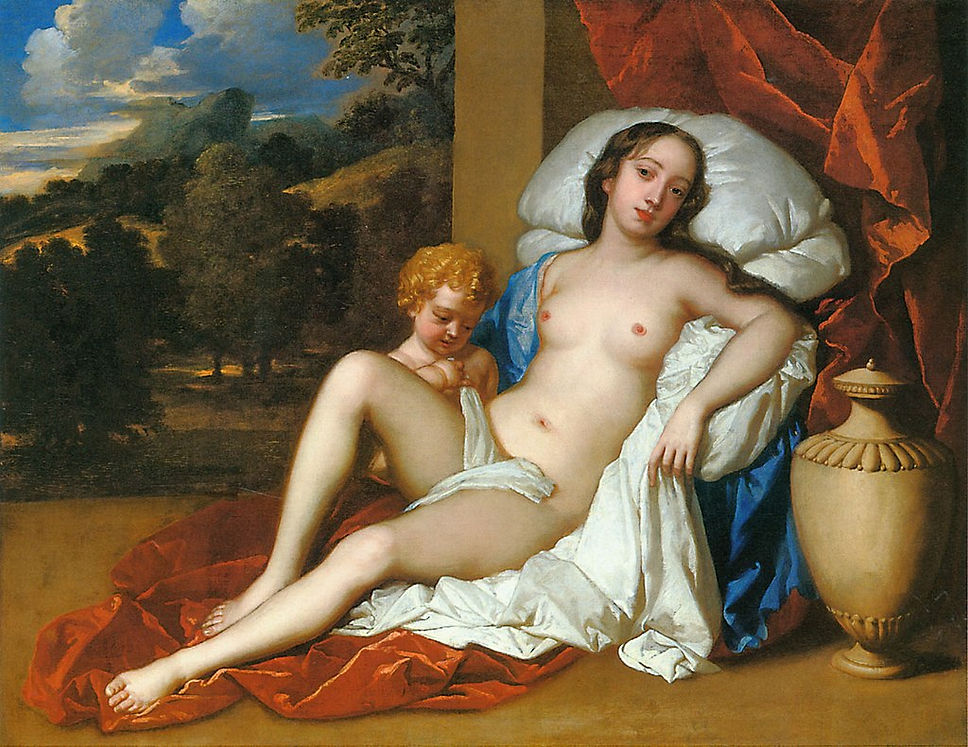
Long-time mistress of Charles II of England, Nell Gwynne as Venus, with her son, Charles Beauclerk, as Cupid.
1650
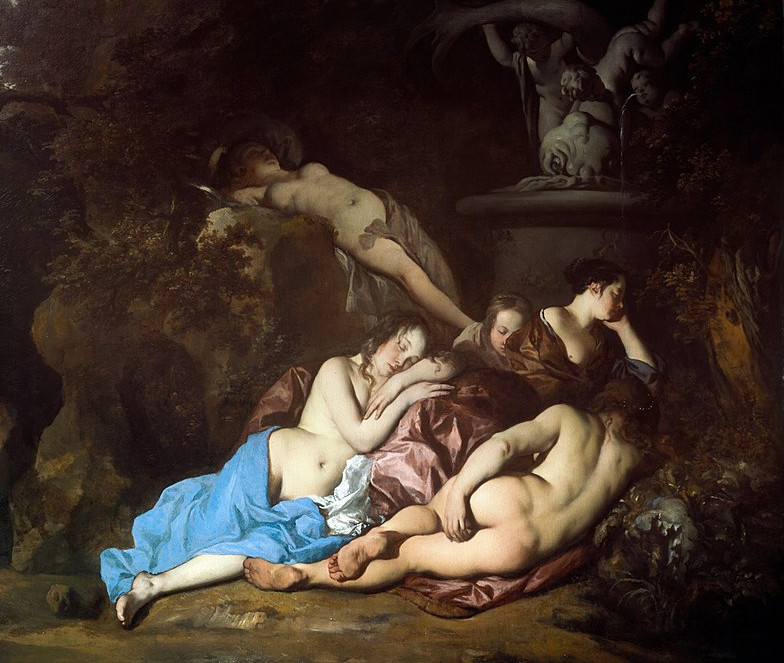
Nymphs by a Fountain
1650

Susanna and the Elders
1650–5.

wo ladies from the Lake family
1650.

Diana Kirke, later Countess of Oxford
1665

A Boy as a Shepherd
c.1658-60

Charles II of England
c. 1675
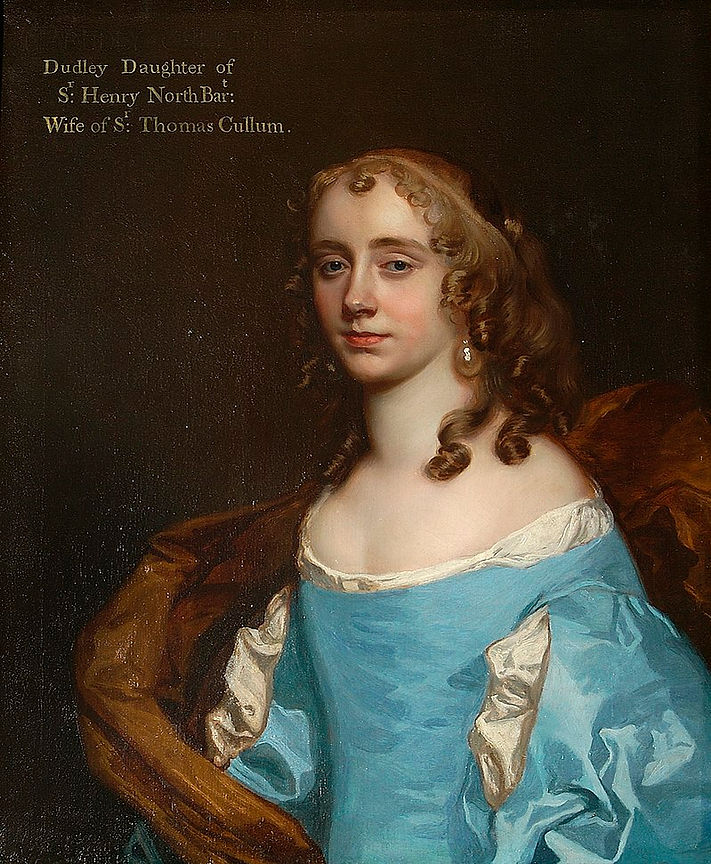
Dudley, Daughter of Sr. Henry North, Bart., Wife of Sir Thomas Cullum

Sir Thomas Fanshawe of Jenkins and his wife Margaret
1659
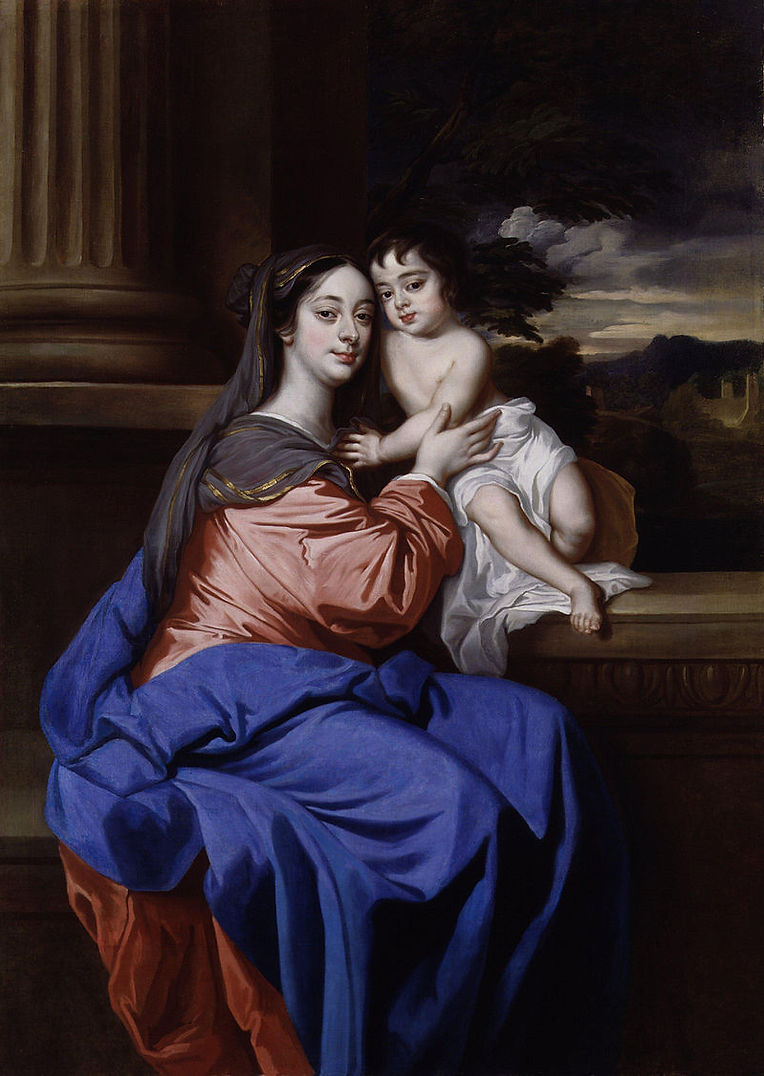
Barbara Palmer (née Villiers), Duchess of Cleveland with her son, Charles Fitzroy, as Madonna and Child
1664

Portrait of Margaret Hughes
c. 1670.

Portrait of Charlotte Lee, Countess of Lichfield
1674
Bartolome Murillo
1618 – 1682
Bartolomé Esteban Murillo (December 1617, baptized January 1, 1618 – April 3, 1682) was a Spanish Baroque painter. Although he is best known for his religious works, Murillo also produced a considerable number of paintings of contemporary women and children. These lively realistic portraits of flower girls, street urchins, and beggars constitute an extensive and appealing record of the everyday life of his times. He also painted two self-portraits, one in the Frick Collection portraying him in his 30s, and one in London's National Gallery portraying him about 20 years later. In 2017–18, the two museums held an exhibition of them.
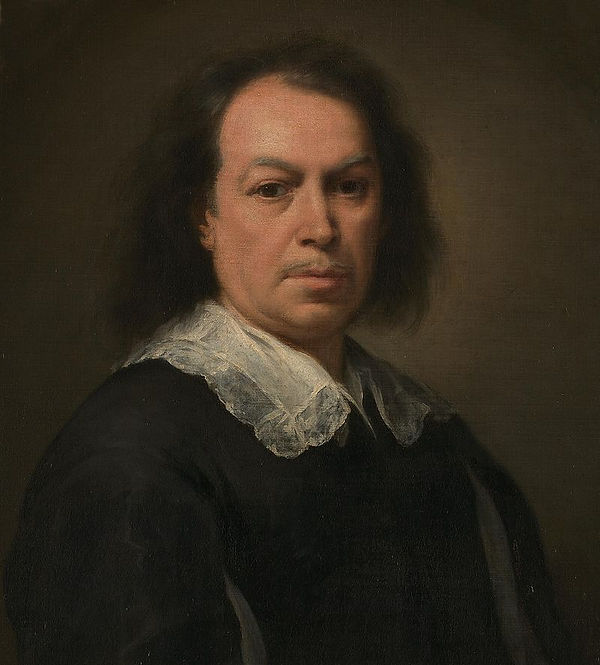
Self-portrait

The Holy Family with a Little Bird
c. 1645–1650

Two women at a window
c. 1655–1660

Joseph and Potiphar's Wife
c. 1640–1645

Young Man with a Basket of Fruit or Personification of Summer
c. 1640–1650

The Girl with a Coin or Girl of Galicia
c. 1645–1650

The Young Beggar
c. 1645

Boys Eating Grapes and Melon
c. 1645–46

St. Jerome
c. 1650–1652

The Virgin of the Rosary
c. 1650–1655

St. Rufina
c. 1665

Rest on the Flight into Egypt
c. 1665
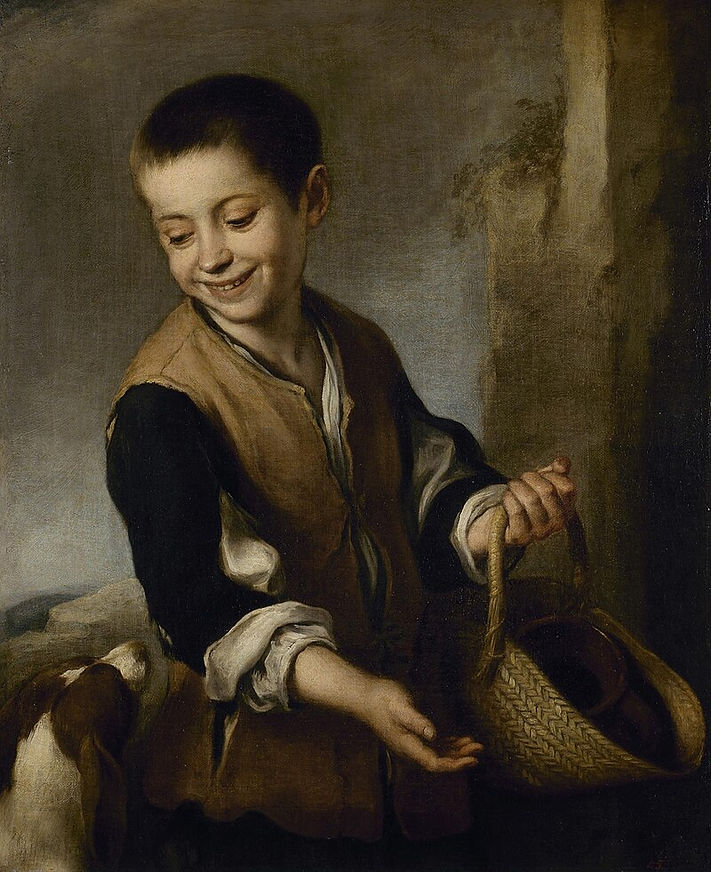
Boy with a Dog
1655-1660

Rebecca and Eliezer
c. 1650

Return of the Prodigal Son
1667-70

Joseph and Potiphar's Wife
1660s

The Toilette
1670-75
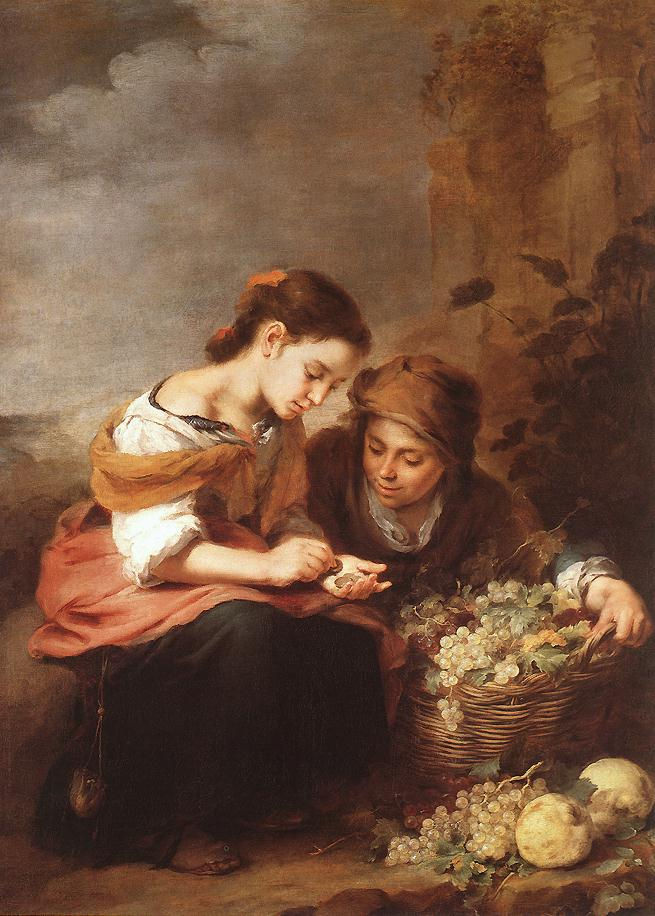
The Little Fruit Seller
1670-75

Two Boys Playing Dice
1670-75
Charles Lebrun
1619 – 1690
Charles Le Brun (French pronunciation: [ʃaʁl lə bʁœ̃]; baptised 24 February 1619 – 12 February 1690) was a French painter, physiognomist, art theorist, and a director of several art schools of his time. He served as a court painter to Louis XIV, who declared him "the greatest French artist of all time". Le Brun was a dominant figure in 17th-century French art and was influenced by Nicolas Poussin.
Born in Paris, Le Brun attracted the notice of Chancellor Séguier, who placed him at the age of eleven in the studio of Simon Vouet. He was also a pupil of François Perrier. At fifteen he received commissions from Cardinal Richelieu, in the execution of which he displayed an ability which obtained the generous commendations of Nicolas Poussin, in whose company Le Brun started for Rome in 1642.
In Rome, he remained four years in the receipt of a pension due to the liberality of the chancellor. There he worked under Poussin, adapting the latter's theories of art. While in Rome, Le Brun studied ancient Roman sculpture, made copies after Raphael, and absorbed the influence of the local painters.
On his return to Paris in 1646, Le Brun found numerous patrons, of whom Nicholas Fouquet was the most important, for whom he painted a large portrait of Anne of Austria. Employed at Vaux-le-Vicomte, Le Brun ingratiated himself with Cardinal Mazarin, then secretly pitting Jean-Baptiste Colbert against Fouquet.
Le Brun was the driving force behind the establishment of the French Royal Academy of Painting and Sculpture in 1648, and was elected as one of the original twelve elders in charge of its running. He remained a dominant figure at the academy and held the positions of chancellor in 1655, rector from 1668 and director from 1683. When Colbert took control of the institution in 1661, Le Brun was there to assist him in his endeavour to reorganise it with the goal that the academicians would work towards bringing about a theoretical foundation for a national French art . Both also founded the Academy of France at Rome in 1666 as a base for promising young artists who would live and learn there for a certain period on the expense of the crown.
Another project Le Brun worked on was Hôtel Lambert. The ceiling in the gallery of Hercules was painted by him. Le Brun started work on the project in 1650, shortly after his return from Italy. The decoration continued intermittently over twelve years or so, as it was interrupted by the renovation of Vaux le Vicomte.

Nicolas de Largillière - Portrait of Charles Le Brun

Portrait of Nicolas Le Brun
c. 1635

Venus Clipping Cupid's Wings
c. 1655

Alexander and Porus
1673

Entry of Alexander into Babylon
ca. 1664
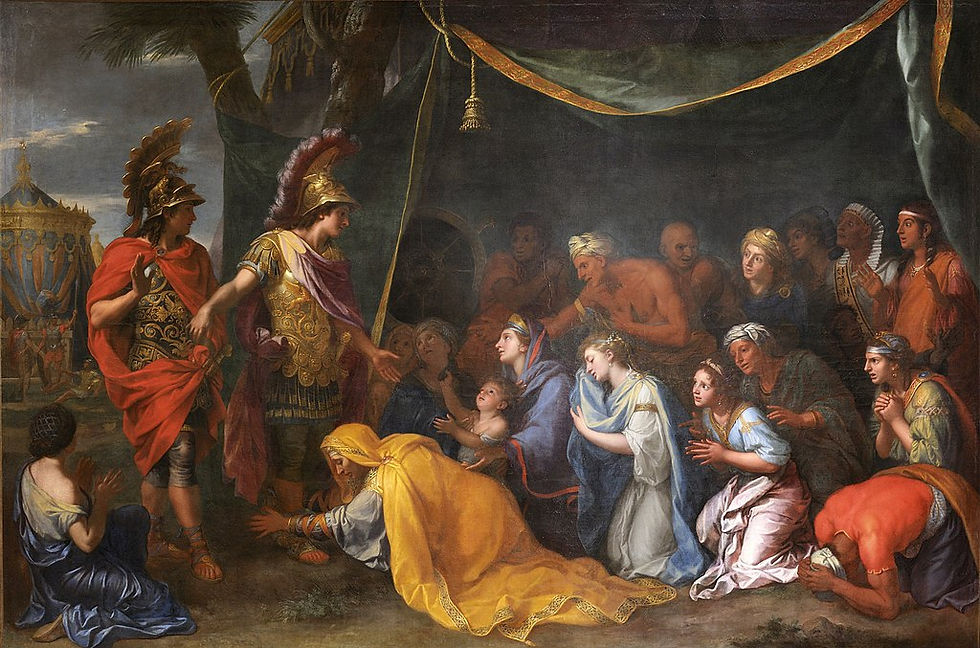
The Queens of Persia at the feet of Alexander, also called The Tent of Darius.

Chancellor Séguier and his suite
ca. 1670
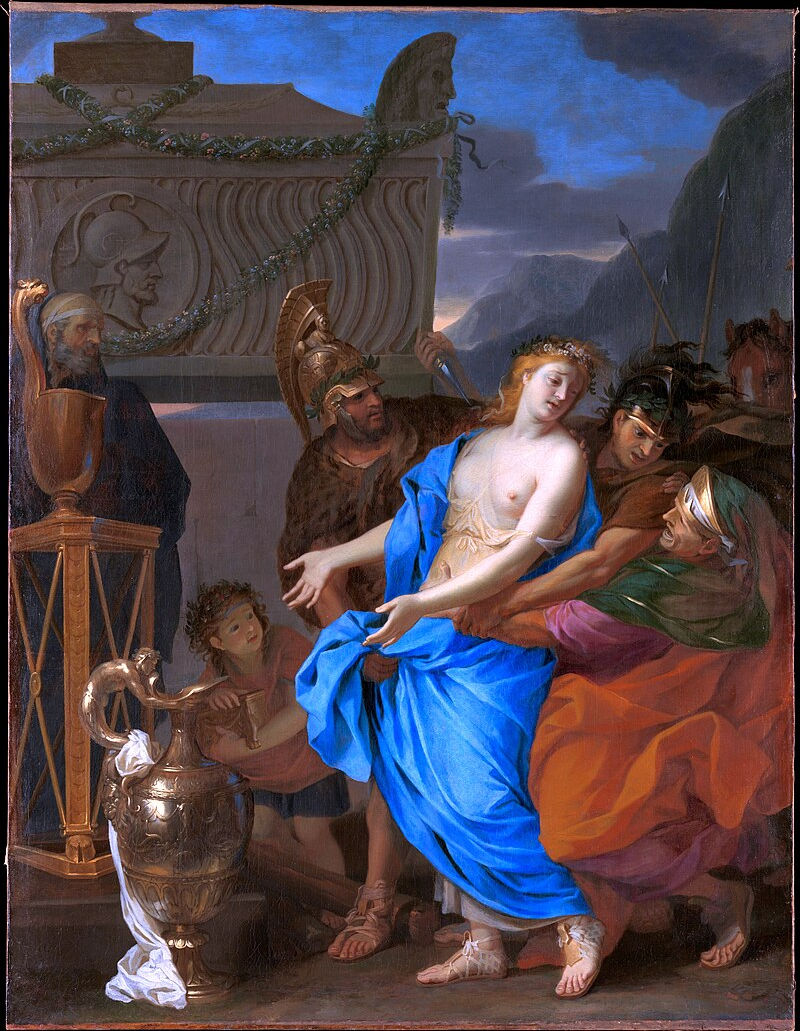
The Sacrifice of Polyxena
1647

Louis XIV Equestrian Portrait
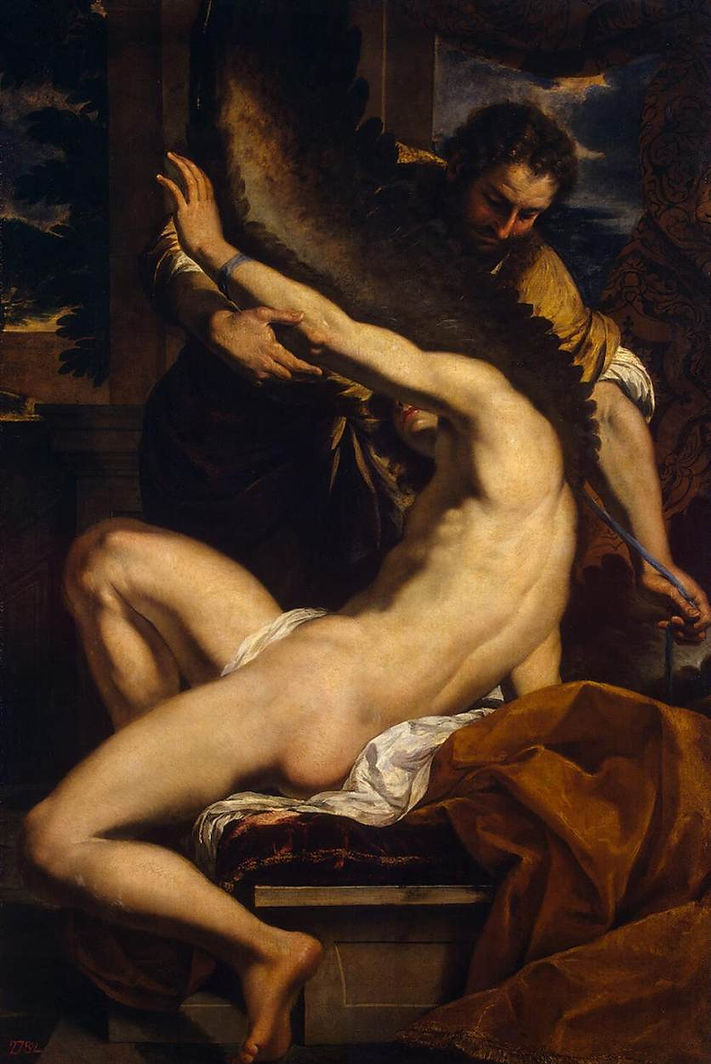
Daedalus and Icarus
1645-46
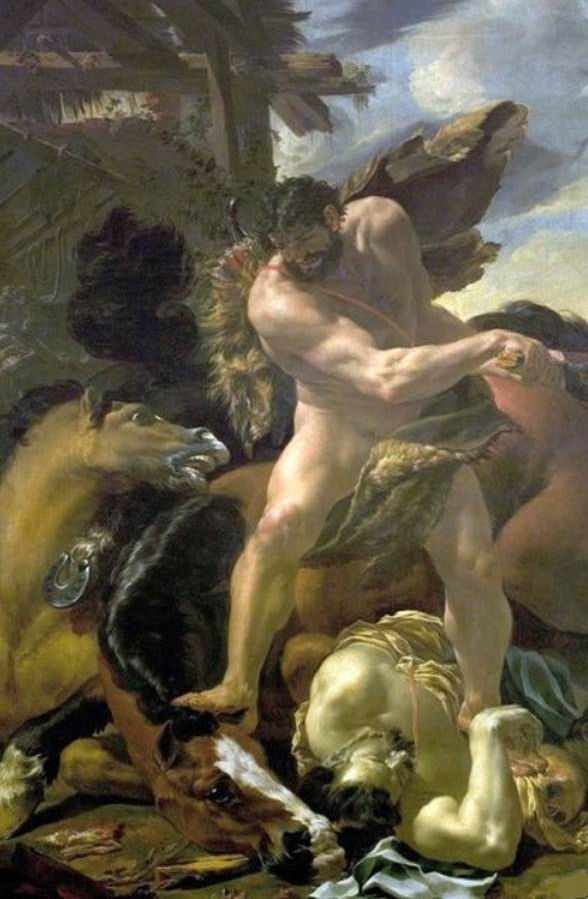
Hercules and the Horses of Diomedes
c. 1640

Portrait of the painter Louis Testelin
ca. 1650

Portrait of Louis XIV
1661.
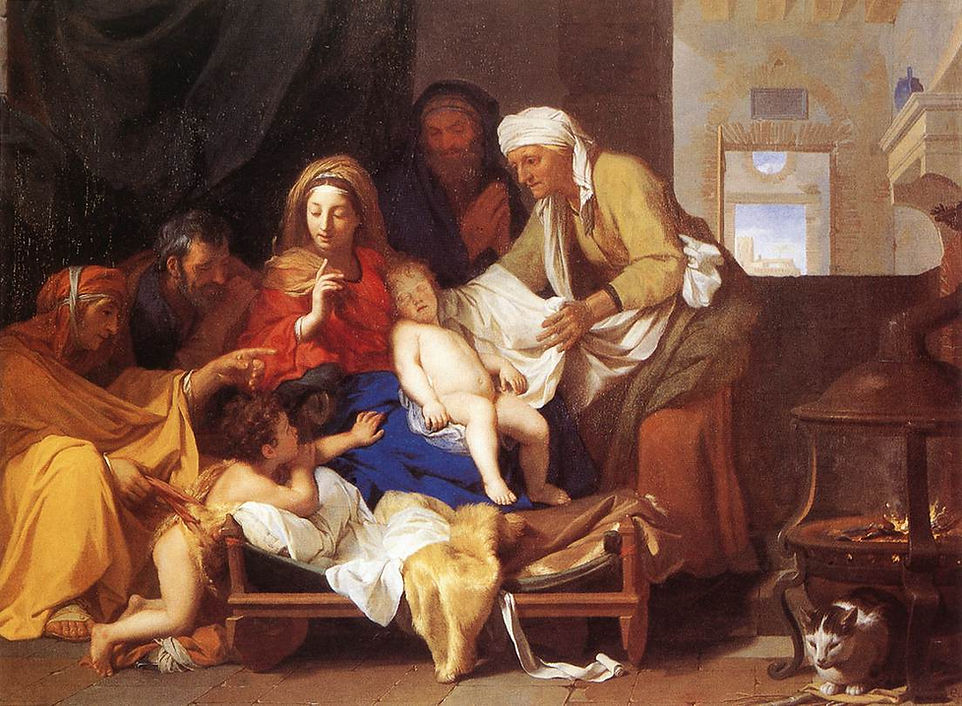
Holy Family with the Adoration of the Child
1655
Jan Steen
1626 – 1679
Jan Havickszoon Steen (c. 1626 – buried 3 February 1679) was a Dutch Golden Age painter, one of the leading genre painters of the 17th century. His works are known for their psychological insight, sense of humour and abundance of colour.
Steen was born in Leiden, a town in Southern Holland, where his well-to-do, Catholic family were brewers[2] who ran the tavern The Red Halbert for two generations. Steen's father even leased him a brewery of his own in Delft from the years 1654 until 1657. He was the eldest of eight or more children. Like his even more famous contemporary Rembrandt van Rijn, Jan Steen attended the Latin school and became a student in Leiden. Though no official records of Steen's artistic training are preserved, contemporary sources tell us he received his painterly education from three men, Nicolaes Knupfer (1603–1660), a German painter of historical and figurative scenes in Utrecht, Adriaen van Ostade, and Jan van Goyen, who would later become his father-in-law. Influences of Knupfer can be found in Steen's use of composition and colour. Another source of inspiration was Isaac van Ostade, a painter of rural scenes, who lived in Haarlem.
In 1648 Jan Steen and Gabriël Metsu founded the painters' Guild of Saint Luke at Leiden. Soon after he became an assistant to the renowned landscape painter Jan van Goyen (1596–1656), and moved into his house on the Bierkade in The Hague. On 3 October 1649, he married van Goyen's daughter[2] Margriet, with whom he would have eight children. Steen worked with his father-in-law until 1654, when he moved to Delft, where he ran the brewery De Slang ("The Snake") for three years without much success. After the explosion in Delft in 1654 the art market was depressed, but Steen painted A Burgomaster of Delft and his daughter. It does not seem to be clear if this painting should be called a portrait or a genre work.
Steen lived in Warmond, just north of Leiden, from 1656 until 1660 and in Haarlem from 1660 until 1670 and in both periods he was especially productive. In 1670, after the death of his wife in 1669 and his father in 1670, Steen moved back to Leiden, where he stayed the rest of his life. When the art market collapsed in 1672, called the Year of Disaster, Steen opened a tavern. In April 1673 he married Maria van Egmont, who gave him another child. In 1674 he became president of the Saint Luke's Guild. Frans van Mieris (1635–1681) became one of his drinking companions. He died in Leiden in 1679 and was interred in a family grave in the Pieterskerk.

Self portrait
c. 1663–1665

A Burgher of Delft and His Daughter
1655

Doctor's Visit
1658-62

The Marriage

Merry Couple

The Morning Toilet
1663

The Morning Toilet
c. 1665

"Oude Vrijer - Jonge Meid"
c. 1665

The Rhetoricians - "In liefde vrij"
1665-68

Rhetoricians at a Window
1662-66

The Meal
1650s

The Bean Feast
1668

The Dissolute Household
1661-64

The Drinker
c. 1660

"In weelde siet toe" (In Luxury, Beware)
1663

'As the Old Sing, So Pipe the Young'
1668-70

The Effects of Intemperance
1663-65

The Life of Man
1665

The Life of Man (detail)
1665

Merry Company on a Terrace
c. 1670

The Oyster-eater
1658-60

A Young Woman playing a Harpsichord to a Young Man
1659
Johannes Vermeer
1632 – 1675
Johannes Vermeer (October 1632 – 15 December 1675) was a Dutch Baroque Period painter who specialized in domestic interior scenes of middle-class life. He is considered one of the greatest painters of the Dutch Golden Age. During his lifetime, he was a moderately successful provincial genre painter, recognized in Delft and The Hague. He produced relatively few paintings, primarily earning his living as an art dealer. He was not wealthy; at his death, his wife was left in debt.
Vermeer worked slowly and with great care, and frequently used very expensive pigments. He is particularly renowned for making masterful use of light in his work. "Almost all his paintings", Hans Koningsberger wrote, "are apparently set in two smallish rooms in his house in Delft; they show the same furniture and decorations in various arrangements and they often portray the same people, mostly women."
The modest celebrity he enjoyed during his life gave way to obscurity after his death. He was barely mentioned in Arnold Houbraken's major source book on 17th-century Dutch painting (Grand Theatre of Dutch Painters and Women Artists, published 1718) and, as a result, was omitted from subsequent surveys of Dutch art for nearly two centuries. In the 19th century, Vermeer was rediscovered by Gustav Friedrich Waagen and Théophile Thoré-Bürger, who published an essay attributing 66 pictures to him, although only 34 paintings are universally attributed to him today. Since that time, Vermeer's reputation has grown enormously.

Detail of the painting The Procuress (c. 1656), believed to be a self-portrait by Vermeer

The Procuress
1656

A Woman Asleep at Table
c. 1657

Girl Reading a Letter at an Open Window
1657

Officer with a Laughing Girl
c. 1657

The Milkmaid
c. 1658

A Lady Drinking and a Gentleman
c. 1658

A Lady Drinking and a Gentleman
c. 1658

View of Delft
1659-60

Girl Interrupted at Her Music
1660-61

A Lady Writing a Letter
1665-66

A Lady at the Virginals with a Gentleman
1662-65

Woman with a Lute near a Window
c. 1663

Woman in Blue Reading a Letter
1663-64

Woman in Blue Reading a Letter (detail)
1663-64

Woman with a Pearl Necklace
1662-64

Woman Holding a Balance
1662-63

Girl with a Pearl Earring
c. 1665

Young Woman with a Water Jug
1660-62

The Concert
1665-66

Portrait of a Young Woman
1666-67

The Art of Painting
1665-67

The Milkmaid
c. 1658

Young Girl with a Flute
1666-67

Girl with a Red Hat
1668

The Astronomer
c. 1668

The Geographer
c. 1668

The Lacemaker
1669-70

The Love Letter (detail)
1667-68

Lady Writing a Letter with Her Maid
c. 1670

The Allegory of the Catholic Faith
1671-74

The Guitar Player
c. 1672
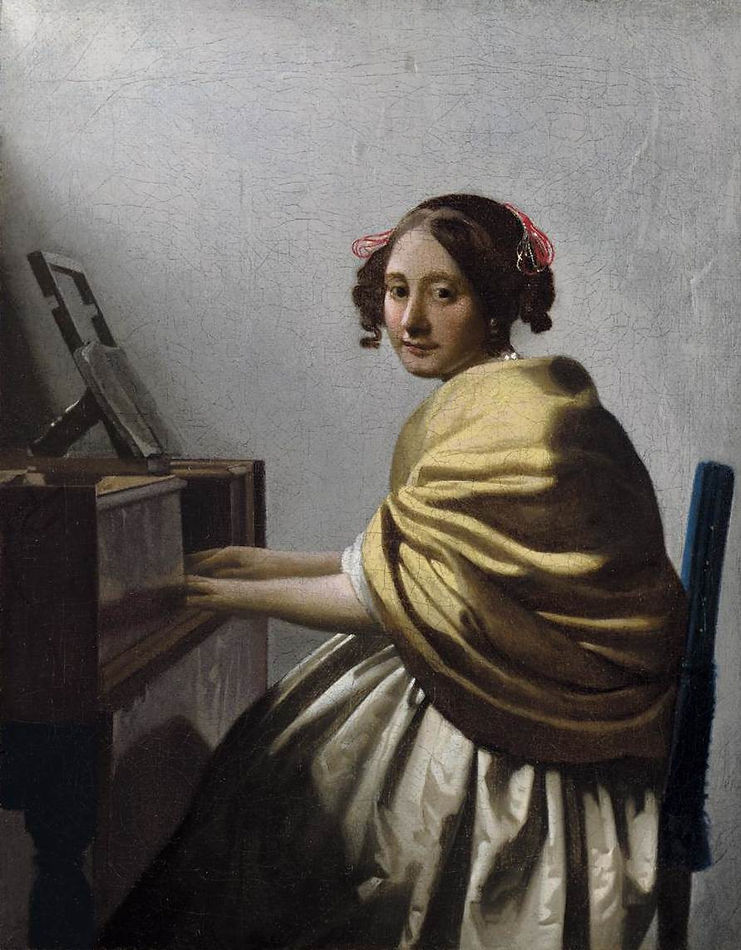
Young Woman Seated at the Virginals
c. 1670

Lady Seated at a Virginal
c. 1673

Lady Standing at a Virginal
c. 1670
Vermeer's Women
In Vermeer's compositions, women appear in one guise or another about 46 times, while men make only 14 appearances.
Women in Vermeer's paintings cannot be considered beauties in the conventional sense. Their beauty, instead, derives from the way they are painted and from the harmonic context in which they inhabit. The qualities that we attribute to Vermeer's work as a whole apply equally to the women they picture: paintings and personages share dignity, equilibrium and an exceptional sense of both vivid presence and abstract purity. The figures range from girlish to maternal, yet all are youthful, with high curved foreheads, features that evenly balance the individual and the classical, and simple believable postures.
None of the women who modeled for Vermeer's paintings have ever been identified even though some seemed to have posed more than once.
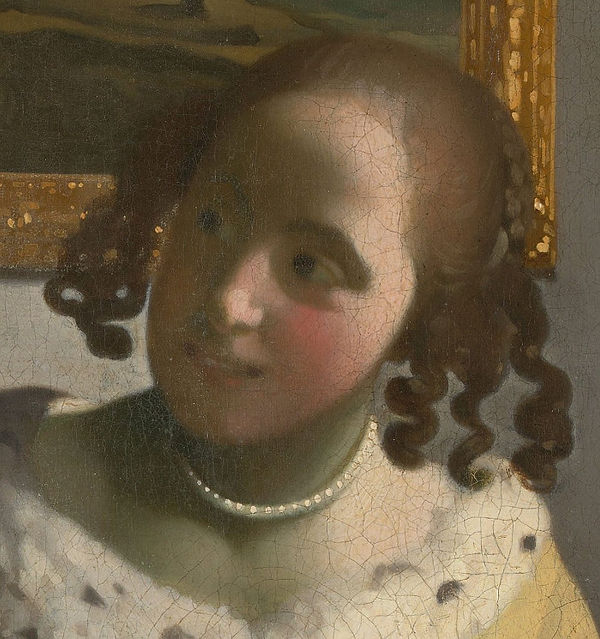
Vermeer's Women

Vermeer's Women

Vermeer's Women

Vermeer's Women

Vermeer's Women

Vermeer's Women

Vermeer's Women

Vermeer's Women

Vermeer's Women

Vermeer's Women

Vermeer's Women

Vermeer's Women

Vermeer's Women

Vermeer's Women

Vermeer's Women

Vermeer's Women

Vermeer's Women

Vermeer's Women

Vermeer's Women

Vermeer's Women

Vermeer's Women

Vermeer's Women

Vermeer's Women

Vermeer's Women

Vermeer's Women

Vermeer's Women

Vermeer's Women

Vermeer's Women

Vermeer's Women

Vermeer's Women

Vermeer's Women

Vermeer's Women

Vermeer's Women

Vermeer's Women

Vermeer's Women

Vermeer's Women
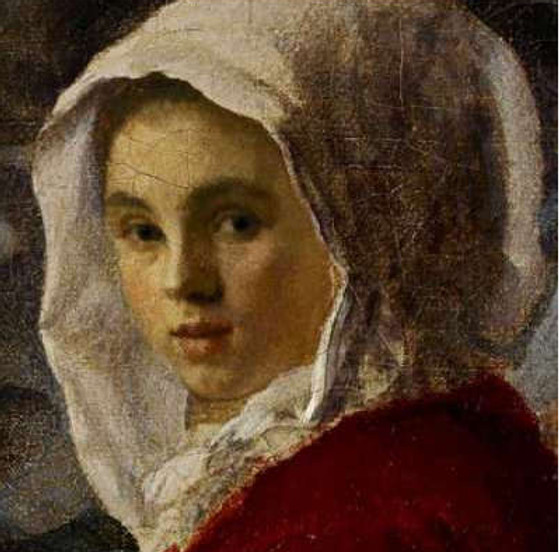
Vermeer's Women

Vermeer's Women

Vermeer's Women

Vermeer's Women
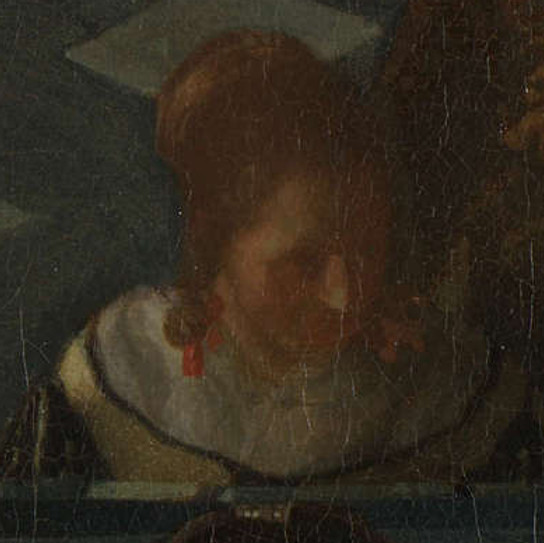
Vermeer's Women
